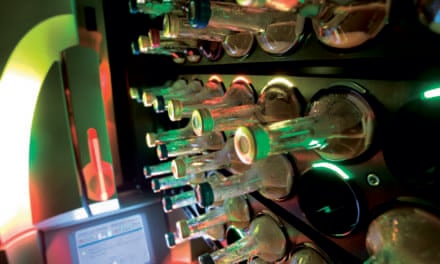Summary: A new study suggests that a simple blood test that measures inflammatory molecules could predict an individual’s risk for stroke and cognitive decline by identifying susceptibility to cerebral small vessel disease.
Takeaways:
- The blood test offers a way to calculate a risk score for cerebral small vessel disease, which is a key factor in stroke and cognitive decline.
- This blood test could simplify and improve the accuracy of stroke risk assessment.
- The findings aim to pave the way for more accessible stroke risk assessments and could influence preventive healthcare strategies.
A simple blood test could allow doctors to determine whether a person may be at higher risk for stroke or cognitive decline during their lifetime, according to a new UCLA Health study.
Calculating the Risk of Stroke and Cognitive Decline
The study, published in the journal Stroke, found that measuring concentrations of a network of inflammatory molecules in the blood could allow doctors to calculate a risk score for susceptibility for cerebral small vessel disease – a common cause of stroke and a contributor to cognitive decline found especially among the elderly.
Currently, the only way to determine a person’s risk for cerebral vascular diseases has been to use a combination of imaging such as an MRI scan, family history, demographic variables and other risk factor evaluations, says study lead author Jason Hinman, MD, PhD, of the UCLA Comprehensive Stroke and Center and the Mary S. Easton Center for Alzheimer’s Research and Care at UCLA. In clinical practice, neurologists may only find a patient is at risk after they have had a stroke or a cerebral event that warns of one, Hinman says.
The new study found that by measuring the concentrations of this network of inflammatory molecules in the blood of patients who have not had a cerebrovascular event, medical providers may be able to quantitatively assess a person’s risk for cerebral small vessel disease and future stroke.
“The same way one uses cholesterol tests to evaluate one’s future risk for heart attack, we don’t have such a thing to estimate future risk for stroke,” Hinman says. “I believe we can do that by something as simple as a blood test which in theory can enable broader access to the best level of care and not lock it behind advanced imaging studies and specialist evaluations.”
The study focused on a biologically-connected network of inflammatory molecules known as the interleukin-18, or IL-18, network, which includes proteins and signaling molecules used to fight various infections.
Analyzing Molecules in the Blood
Past studies have linked individual molecules in the IL-18 network to cerebral small vessel disease and stroke risk. However, the concentration of these individual molecules can fluctuate in response to other ailments such as the flu or autoimmune disorders, making them unreliable predictors of stroke risk at an individual level, Hinman says.
In 2020, University of California researchers including Hinman found that six molecules in the IL-18 network were associated with the presence of vascular brain injuries during MRI scans.
Building off these findings, Hinman sought to determine in this latest publication whether IL-18 network could be used to assess a person’s susceptibility to stroke risk or cognitive decline.
To test this, the researchers used health data from a generations-long study known as the Framingham Heart Study. This study has tracked the medical history of thousands of residents in the city of Framingham, Massachusetts, throughout their lives since launching in 1948. Blood samples taken from participants had been tested for five of the six molecules later identified as being in the IL-18 network.
Further reading: Blood Test Predicts Functional Outcome After Ischemic Stroke
By using the blood samples and medical histories of the Framingham participants, Hinman and his coauthor were able to create a mathematical model that generates a risk score based on the concentrations of the IL-18 network molecules. Of the more than 2,200 Framingham residents included in Hinman’s study, those whose risk scores were in the top 25% had an 84% chance of having a stroke during their lifetime. Overall, elevated risk scores were associated with a 51% increased risk of stroke and resulted in diagnostic prediction compared to existing risk assessment tools.
What remains unclear and requires further study is how or if a person’s risk score can be modified or reduced, Hinman says.
“The real challenge is in the primary care space. Are you at risk before you have an event?” Hinman says. “That’s what we’re all interested in doing is preventing a stroke before it even happens.”





